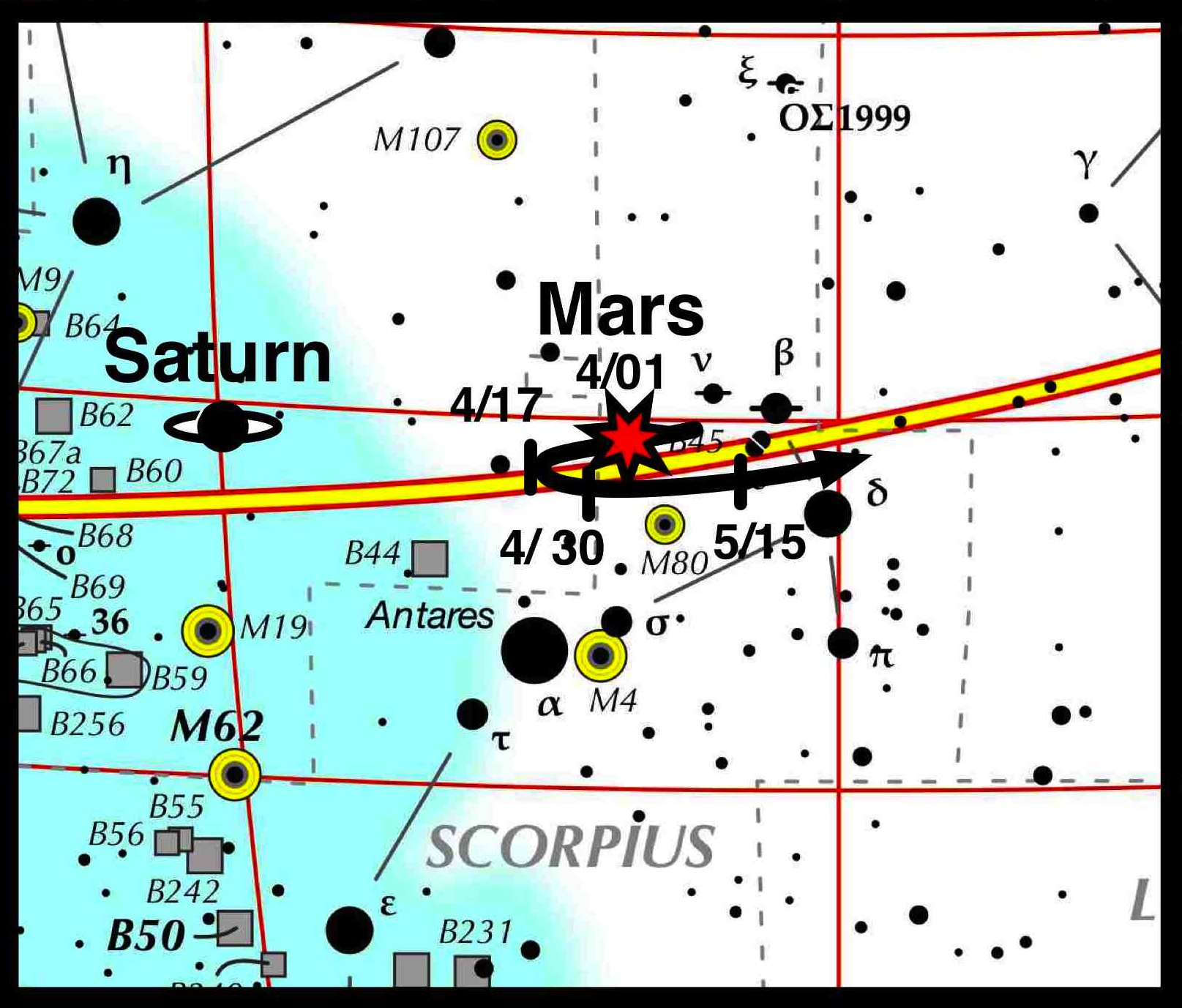April 10 - April 24, 2016
Study the path of Mars as it moves across the sky.
For GAM2016, we will be running a series of Observing Challenges, developed by The Astronomical League. Whether you are a complete novice to astronomy or a seasoned veteran there will be something for you! Some of the challenges can be done in a night and some will take the whole month.
If you are a sidewalk astronomer or part of an astronomy club you might like to run events to help people complete the challenges. If are planning an Observing Challenge event, don't forget to register your event!
Discuss your observations, ask and answer questions and meet fellow astronomers working on these challenges from around the world in our forum.
Share your photos from this challenge with us and the world on Facebook, or Tweet using #GAM2016 hashtag (@gam_awb).
Did you know? The word Planet comes from the ancient Greek πλάνης (plánēs) which means 'wanderer'. This is because the planets sometimes appear to wander across the sky in different directions to the stars behind. In April you will be able to see a great example of this by observing the path of Mars over a number of days.
As Earth catches up to the Red Planet in their never ending race around the sun, Mars, most times, appears to move slightly eastward each night. When Earth begins to overtake it, though, Mars reverses direction and heads westward for about ten weeks. Then, after Earth has passed it, it reverses direction again and heads eastward for the next two years.
On April 17, Mars will stop moving eastward and start moving slightly westward each night until June 29. Throughout April the planet also brightens.For two weeks (one week before and one week after its apparent change in direction) plot Mars’ ever changing position in front of the background stars. (Note: Mars won’t rise until after midnight.)

During this orbital overtake, Mars will be shining above the red star Antares in Scorpius and west of Saturn in the neighboring constellation Ophiuchus. This will be a great opportunity to compare the shades of red that Mars and Antares exhibit. Also, planets, like Mars and Saturn, shine with a steady light, while stars, such as Antares, tend to twinkle. Do you notice this phenomenon?
Share your photos with us on Facebook, or Tweet using #GAM2016 hashtag (@gam_awb).









